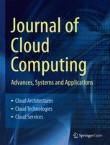Journal of Cloud Computing welcomes submissions to the thematic series entitled "Deep learning in edge computing for massive parallel processing of IoT data streams"
Deep learning is a promising technique for extracting precise information from raw sensor data from IoT devices adopted in real time environments. In addition, the multi-layer structure of deep learning is more appropriate in the edge computing environment. There have also been rapid advances in Internet of Things (IoT) technologies, and the number of IoT connected devices at the edges of the Internet is growing exponentially, into billions of connected devices. While this has brought unforeseen opportunities for all fields of science, engineering, businesses, etc., a number of challenges have also arisen such as the architectural challenge and the data deluge challenge.
Such challenges have been addressed by the IoT Cloud, namely, the IoT layer is directly connected to Cloud data centres to support IoT management and Big Data / Big Data stream processing. However, there are clear limitations of the IoT Cloud and traditional edge computing models have rigid characteristics. Integration of deep learning with edge computing architecture can help resolve the rigidity inherent in IoT edge computing. The focus of this special issue combines deep learning into edge computing to reveal latest research findings and developments in the field of IoT-edge computing. We also expect submissions from fundamental results to real life applications and case studies, motivated by the need of massively deep learning algorithms in edge computing to achieve efficiency and availability of IoT data streams processing.
We invite original research articles, with an emphasis on deep learning paradigms in real-time IoT-edge computing applications, as well as review articles that will stimulate further activities in this area and improve our understanding of the key scientific problems. Topics may include, but are not limited to:
- Deep learning for design and development adaptive self-healing and resilient edge computing systems
- Deep learning algorithms co-designed for computing and/or learning at the edge
- Methodologies to design and test intelligent edge systems, with emphasis on power, latency, and security requirements
- Benchmarking deep learning workloads and/or frameworks on the edge, including accuracy, performance, power and energy etc.
- Hierarchical and distributed approaches to enable edge IoT computing
- Deep/Machine learning for IoT signal processing on edge device
- Information-theoretic signal learning on edge IoT devices
- Deep learning and low-resource machine learning for IoT data streams
- Fog, edge and mist computing for Deep learning in IoT applications (health
- Management, risk prediction and social network analysis etc)
Submission instructions
Before submitting your manuscript, please ensure you have carefully read the submission guidelines for Journal of Cloud Computing. The complete manuscript should be submitted through the Journal of Cloud Computing submission system. To ensure that you submit to the correct thematic series please select the appropriate special issue in the drop-down menu upon submission. All submissions will undergo rigorous peer review and accepted articles will be published within the journal as a collection.
Submission deadline: 1 December 2019
Lead guest editor:
Arun Kumar Sangaiah, Vellore Institute of Technology, India
Guest editors:
Patrick Siarry, Université Paris-Est Créteil, France
Prem Prakash Jayaraman, Swinburne University of Technology, Australia
Faiyaz Doctor, School of Computer Science and Electronic Engineering, University of Essex, UK
Submissions will also benefit from the usual advantages of open access publication:
- Rapid publication: Online submission, electronic peer review and production make the process of publishing your article simple and efficient
- High visibility and international readership in your field: Open access publication ensures high visibility and maximum exposure for your work - anyone with online access can read your article
- No space constraints: Publishing online means unlimited space for figures, extensive data and video footage
- Authors retain copyright, licensing the article under a Creative Commons license: articles can be freely redistributed and reused as long as the article is correctly attributed.
